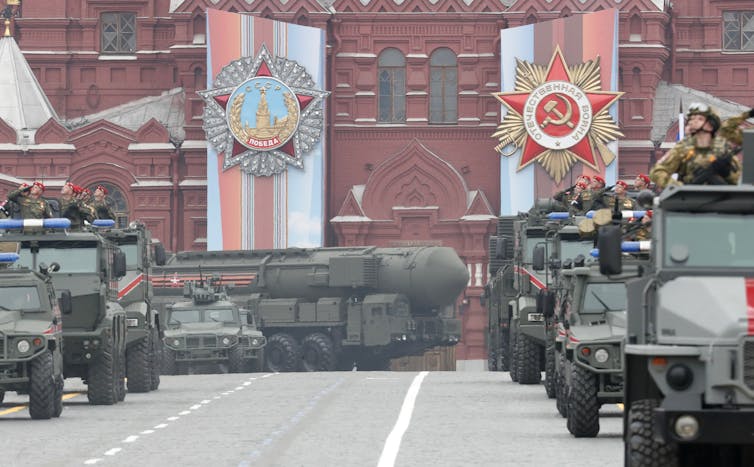[ad_1]
Thanks to the final Soviet leader Mikhail Gorbachev, who has died aged 91, a disarmament treaty has denied Vladimir Putin thousands more missiles which he could have ordered to be used against Ukraine. Russian forces attacking Ukraine have not been able to use land-based missiles with ranges of between 500km and 5,500km because this entire category of weapons was scrapped under the 1987 Intermediate-Range Nuclear Forces (INF) Treaty, which the former Soviet leader was instrumental in establishing.
When the treaty was implemented, thousands of the Soviet Union’s most modern missiles were, along with their American equivalents, crushed, sawn or blown up. While the treaty was cancelled in 2019 by the then US president, Donald Trump, only one Russian missile type now exists that has this range (in violation of the treaty). As this SSC-8 missile has a nuclear-only role, it has not, so far, been used in Ukraine.
A huge proportion of Russian munitions used in Ukraine are vintage Soviet systems. With conventionally armed Soviet-era INF missiles with ranges over 500km, Lviv and other centres in western Ukraine could have been devastated.
But because of the INF Treaty, Russia has not been able to field new generations of ground-to-ground conventional missiles or non-nuclear variants of the cold war stocks. Instead, it has had to use limited numbers of missiles built for air and sea launch as well as bombers to attack targets deeper than 500km from Russian (and Belarusian territory).
Negotiate from strength
The process that produced the extraordinarily effective INF treaty provides important guidance for a renaissance in disarmament in the present century. Alarmed by the Soviet invasion of Afghanistan and new Soviet missiles – notably the SS-20 – Nato embarked on a twin-track strategy in 1979: arm, but negotiate while arming.
Eight years later the INF treaty was signed, implementing the demand of western anti-nuclear campaigners and eastern dissidents for “No Cruise, No Pershing, No SS-20s”. The Reagan administration – under public pressure and informed by a key Soviet defector of the USSR’s real fear of a US nuclear attack – picked up the movements’ demands.
Initially they couldn’t have imagined that the Soviet Union would accept this “zero option”. In fact, Gorbachev went even further and called for all weapons under 500km to be scrapped. However, Nato refused, arguing that this would damage its deterrent. It is missiles in this category that are raining down on Ukraine today.

EPA-EFE/Maxim Shipenkov
“Negotiate from strength” has long been a powerful argument in diplomacy. Today, the US and its allies enjoy a ten to one superiority in military spending over Russia and an even greater one over China. Unless western taxpayers have been very badly served, this spending has translated into effective technologies despite rhetoric over hypersonics and Putin’s doomsday nuclear torpedoes.
US allies in Nato and the Pacific are now deploying conventional missiles for their fighter jets able to reach Moscow and Beijing from outside Russian and Chinese territory.
New approach needed
That such supremacy does not appear to soothe the concerns of further Russian aggression points to the risks of miscalculation so apparent in Vladimir Putin’s “special military operation” and how far deterrence strategies rely on luck. A disarmament track is once more essential to counter the now almost uncontrolled deployments of weapons of all types and act independently to reduce arms and states to increase them.
Where to start? The UN’s Treaty on the Prohibition of Nuclear Weapons is one positive initiative as states without nuclear arms try to build a consensus to influence those with nuclear arms – so far unsuccessfully.
But clearly more is needed. Picking up the INF Treaty mantra of a zero option, campaigners need to seek a global zero on missiles of all kinds, down to a range of say 150 km. Such an initiative would be a boon to taxpayers, and a relief to states to trying to keep up with the west. Modern verification technologies can provide early warning of cheating.
Zero missiles can provide the heart of a new UN global negotiation on disarmament. The project for a Strategic Concept for the Removal of Arms and Proliferation at the University of London brings experts, non-governmental organisations, governments and religious figures together for a global process of disarmament comparable to those helping tackle climate change. It offers new ideas on checking up on cheating using digital tech and draft treaty building on the best practices of the Gorbachev era.
[ad_2]
Source link
